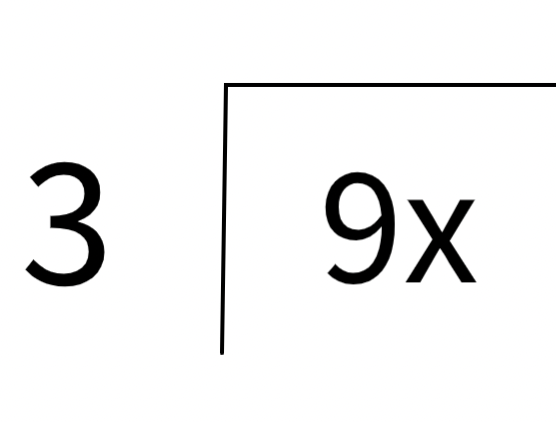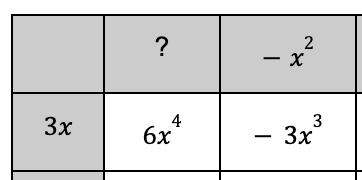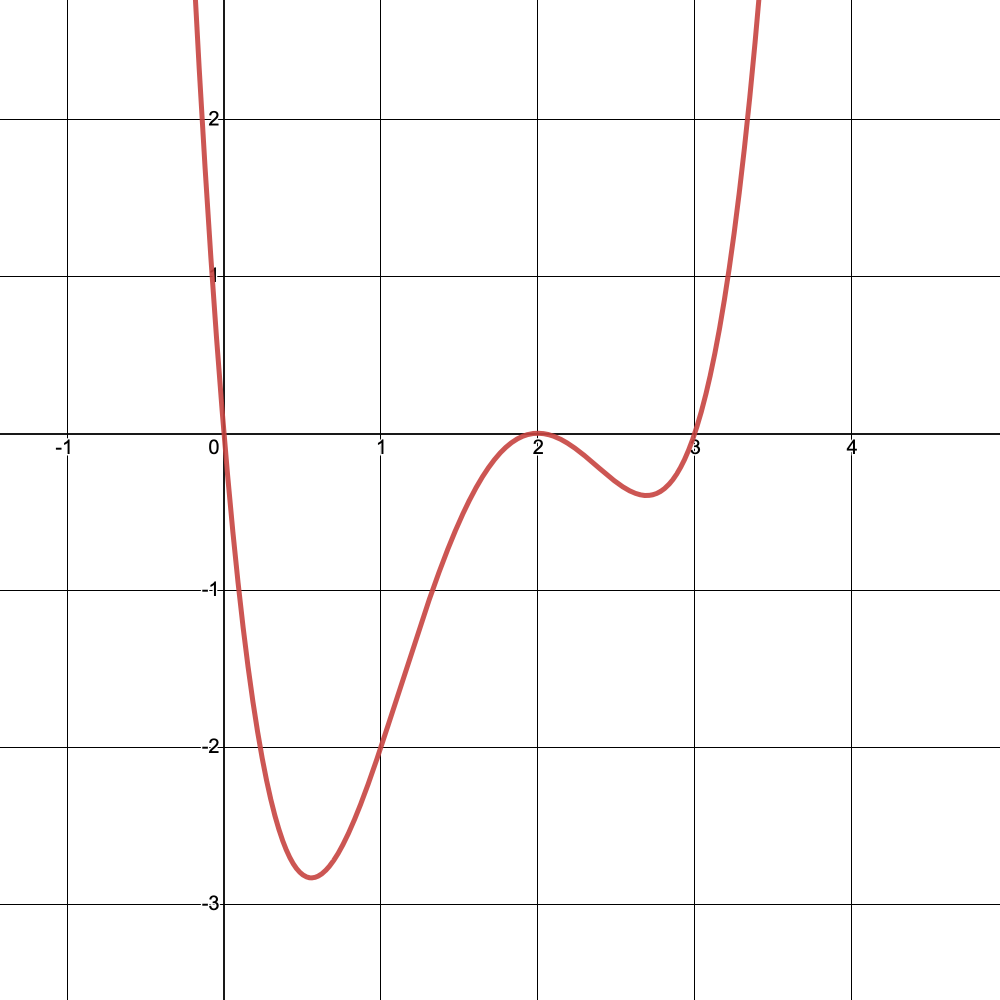What two parts make up a complex number?
Real Part and Imaginary Part
What is the following equal to?
i^2
-1
Will this graph cross or bounce off the x-axis?
y=x^2
bounce
How would you set up the following division problem using the long division method:
(9x)/3

What is y-value for any x-intercept?
y=0
How do we add complex numbers?
Add real to real and imaginary to imaginary

Rewrite the following with an imaginary number
4i
State the degree of the polynomial
y=(x-3)^2(x-4)^3(x-5)
6
Divide the following expression:
(18x)/2
9x
State the x-intercepts of the following polynomial.
y=(x+2)(x-4)
x=-2
x=4
Add the following:
(4+2i)+(-2+3i)
2+5i
Multiply the following
(3i)(2i)
-6
State the leading coefficient and whether your graph is positive or negative orientation.
y=3x^2-5x^4+2x-4
-5
Negative orientation
What goes in the missing square?
2x^3
State the roots of the following polynomial
y=x(x^2-25)
x=0
x=5
x=-5
Subtract the following:
(5+3i)-(3+3i)
2
Evaluate the following
(5i^2) (3i^2)
15
State the degree and whether the ends with face the same or opposite directions:
y=3x^2-5x^4+2x-4
degree: 4
Same direction
Solve the following expression:
(x^2+2x-15)/(x+5
(x-3)
How many times with this graph touch the x-axis?
y=(x^2+36)(x-2)(x+4)
two times at
x=2
x=-4
Multiply the following:
(4-3i)(4+3i)
25
What does this equal to?
i^8
1
y=x(x-2)^2(x-4)^3
Sketch a quick graph of the following polynomial:

Divide the following:
(x^3-4x^2+6x-4)/(x-2)
x^2-2x+2
State the roots:
y=(x^2+9)(x^2-16)
x=4
x=-4
x=-3i
x=3i